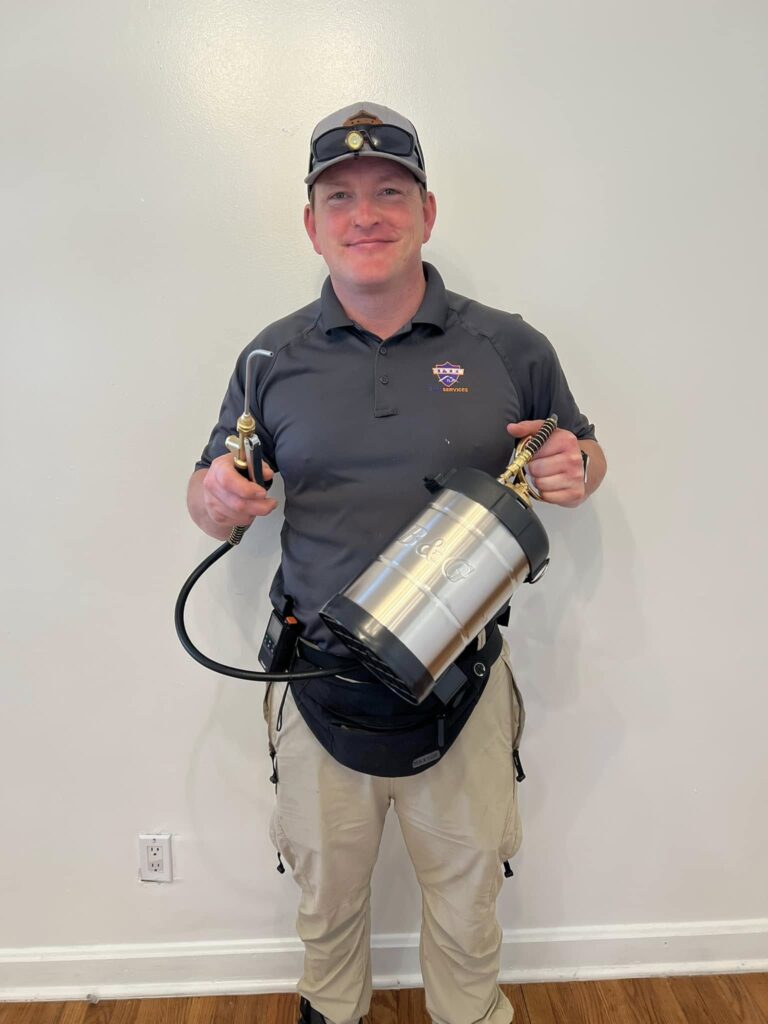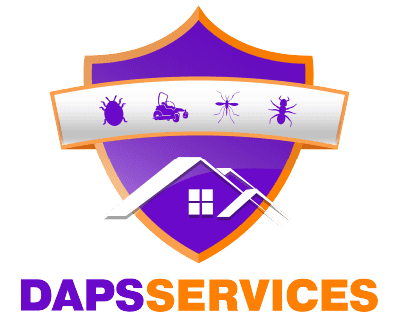Pest control isn’t a one-size-fits-all approach across the calendar. Different weather conditions create different pest pressures, and knowing what to expect helps protect your home more effectively.
Let’s explore the year-round pest cycle and how to stay ahead of seasonal invaders with home and business pest control.

Spring: The Awakening
As temperatures warm in March and April, dormant insects stir and reproduction rates accelerate.
Termite swarms typically emerge in early spring, usually on warm days after rainfall. These winged reproductive termites leave established colonies to start new ones, and seeing them around your home often signals an existing infestation nearby.
Ants become significantly more visible in spring as they forage more actively after winter’s relative scarcity. Different ant species emerge at slightly different times, but most become problematic by April. The common carpenter ant poses special concerns, as it damages wood structures similar to termites through different mechanisms.
Mosquitoes return in force as standing water from spring rains provides breeding grounds. Female mosquitoes lay eggs in as little as a bottle cap’s worth of water, and eggs can hatch into larvae within 48 hours in warm conditions. By late spring, mosquito populations can explode, making outdoor activities uncomfortable and potentially exposing residents to mosquito-borne diseases.
Spring pest prevention should focus on removing yard debris, eliminating standing water, and addressing moisture issues around foundations.
Summer: Peak Activity Season
Pest reproduction rates reach their highest levels, and activity becomes more visible indoors and outside. The pressure on homes intensifies as pests seek shelter from the heat and search for water sources during dry periods.
Summer pest management requires vigilance about food storage and cleanliness, as even small crumbs can attract pests in large numbers.
Regular professional treatments become more important during this season of peak activity. The perimeter treatments applied around homes need more frequent renewal in summer due to heavier pest pressure and faster breakdown of products in the heat and occasional heavy rains.
Fall: The Great Migration Indoors
As temperatures begin cooling in September and October, many pest species actively seek winter shelter. This natural survival instinct drives them toward human structures, making fall a critical transition period for home pest protection. The pests entering during this season often remain through winter.
Fall prevention should focus heavily on sealing potential entry points before cooling temperatures drive pests indoors. Adding door sweeps, repairing damaged screens, and sealing utility penetrations creates significant protection. Professional treatments applied around the perimeter in early fall help reduce the number of pests attempting to enter. Many pest control companies offer specialized fall services designed specifically to prevent the seasonal invasion.
Winter: The Hidden Threats
While outdoor pest activity diminishes, indoor pest problems can actually intensify as existing infestations develop with less competition and predation. The pests that successfully entered during fall often become established residents by winter.
Winter pest threats often go unnoticed until problems become severe:
- Rodents remain highly active, nesting in attics, wall voids, and crawlspaces where they damage insulation, wiring, and structural elements. Their droppings and urine create health hazards for residents.
- Cockroaches continue thriving in heated indoor environments, particularly in kitchens and bathrooms. Their populations may actually increase during winter months if left untreated, as they remain inside rather than moving between environments.
- Termites remain active in heated indoor spaces year-round, continuing to damage wooden structures even as outdoor temperatures drop. By spring, undetected winter damage can be extensive.
- Stored product pests like pantry moths and beetles often become more noticeable in winter as families spend more time indoors and cook more frequently at home.
Winter pest control should maintain interior protections while addressing specific issues in enclosed spaces like attics, basements, and crawlspaces. Professional inspection of these areas during winter can identify developing problems before they spread to living spaces.
Planning Year-Round Protection
Understanding seasonal pest patterns allows you to implement targeted prevention strategies throughout the year. Rather than reacting to problems as they occur, this knowledge helps you stay ahead of potential infestations through proactive measures aligned with natural pest cycles.
The most effective approach combines consistent professional treatments with seasonal adjustments to address shifting pest pressures:
- Spring focus: Barrier treatments, termite inspections, mosquito prevention
- Summer strategy: Increased perimeter protection, stinging insect monitoring, moisture control
- Fall preparation: Entry point sealing, rodent exclusion, perimeter reinforcement
- Winter maintenance: Interior inspections, attic/crawlspace monitoring, food storage management
Between professional visits, your own seasonal maintenance plays a crucial role in pest prevention. Spring cleanup removes harborage areas, summer vigilance about food and moisture reduces attractants, fall exclusion work blocks entry points, and winter inspections catch developing problems early. This partnership between homeowner efforts and professional treatments creates the strongest defense against year-round pest pressure.

